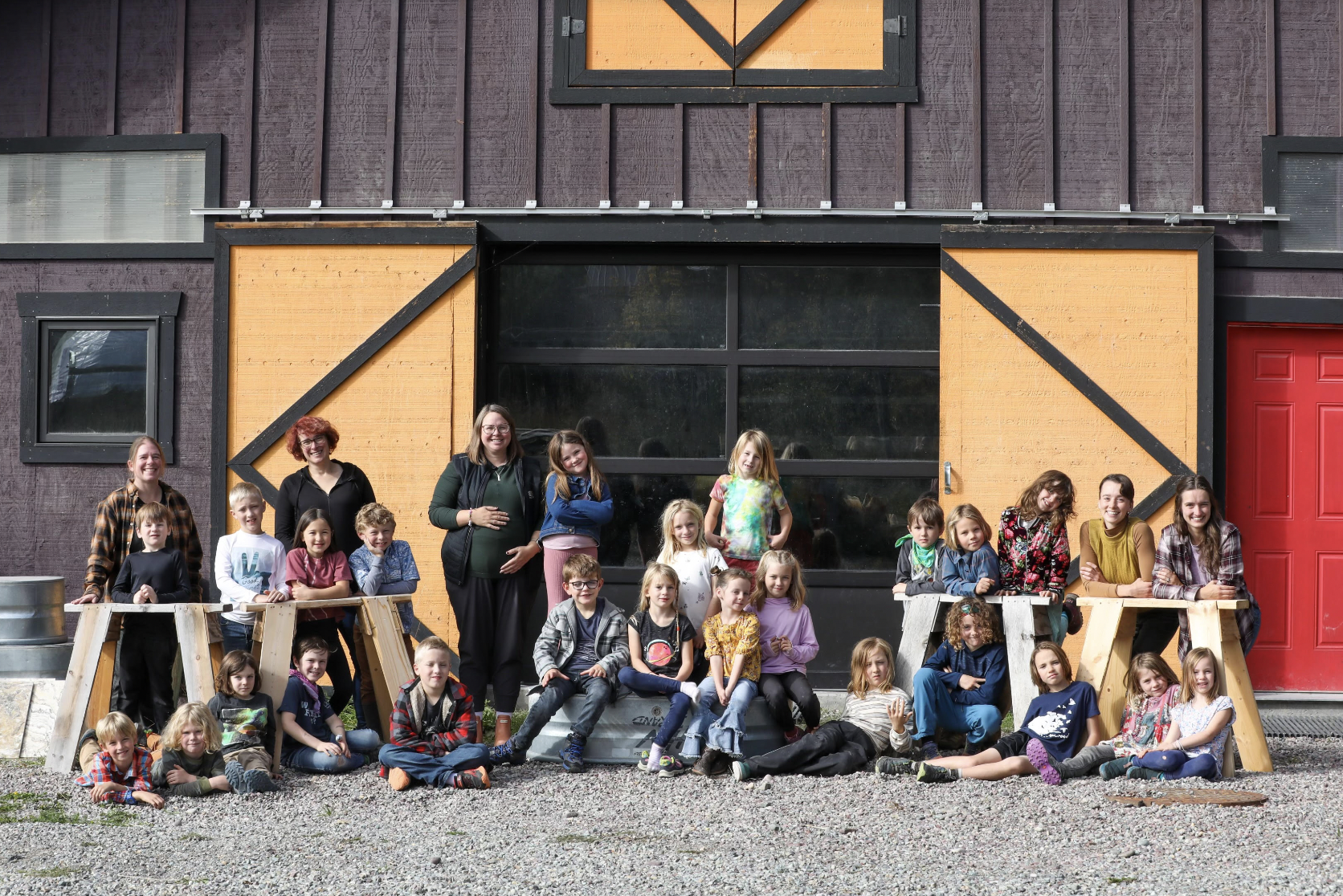
We recently spoke with educators from The Skola, a nature-based independent elementary school nestled in Whitefish, Montana. Here, breathtaking mountains, forests, and waterways are the classroom. They shared their exciting journey of integrating Project Based Learning (PBL) and Place-Based Learning into their curriculum, including a captivating project exploring the dual nature of fire.
Let's begin by introducing yourselves:
Patty, Curriculum Director and Founder of The Skola - I'm by training a speech and language pathologist (SLP) and have worked in schools for more than 15 years. I have expertise in literacy and language. Those are my really big loves!
Brooke, Director and Founder of The Skola - I'm also an SLP. I started out with adults doing more neurotrauma, head injuries, and strokes—I’ve always been interested in the brain. Then, I started working in outpatient therapy with kids who had social and executive function challenges. I became fascinated with the overlay of executive functioning and social-emotional learning and how they were really one in the same in many ways. I also helped start an outdoor camp in Maine for Neurodivergent kids.
Karen, Outdoor Educator at The Skola- I'm the outdoor educator at the Skola. I have degrees in Latin and Philosophy, and I love the natural world. After training at Twin Eagles Wilderness School, my whole plan flipped on its head. I realized these nature connection skills are more than science, they’re about going back to the way our ancestors used to learn and teach when the natural world was the classroom and the curriculum.
Tell us a little bit about your school:
Our school is a nonprofit organization that includes pre-K through third-grade nature-based programs, with approximately 65 students currently enrolled. Each class typically ranges from ten to 15 students, and we maintain a low student-to-teacher ratio. Thanks to a robust scholarship fund, we've been able to extend our services to a diverse community, with some families and teachers traveling up to 45 minutes to attend.
When talking about our school, one word at the forefront of my mind is interconnectedness: in our school community, nature, and the concept of place as a whole. Our mission statement states that we pair what we know with how we grow, emphasizing that there are so many aspects of learning when you're thinking of a whole child. So there is, of course, the academic foundation you need for learning, including factual knowledge and concepts. But equally there's the social-emotional piece. There is the curiosity. There is that understanding of systems thinking in how nature works and how we work with each other as a community. We draw from Albert Einstein’s words, “Learning is experience. Everything else is just information.”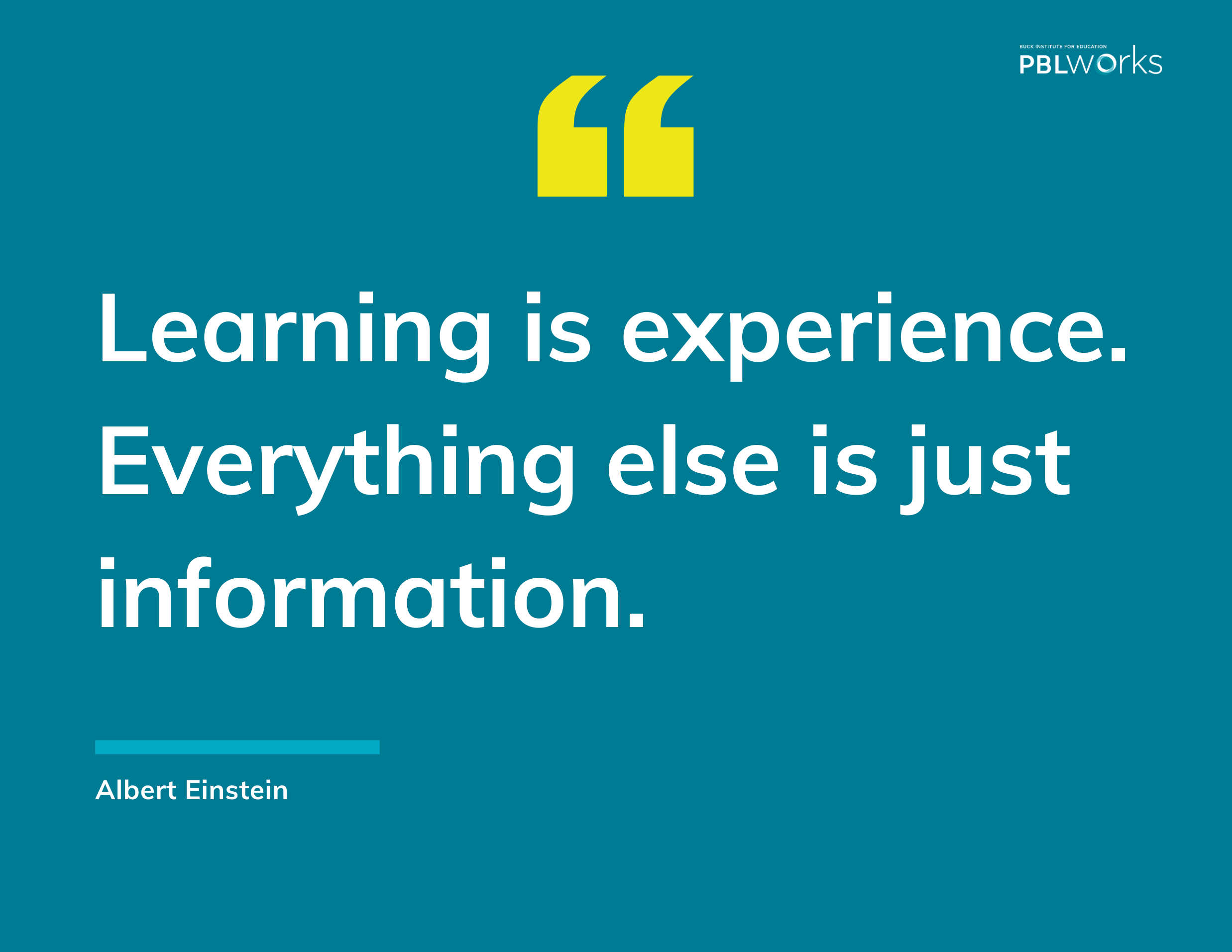
How did your journey with Project Based Learning begin?
We love to read about education philosophies. Nowadays, traditional programs are often seen as more academically rigorous, and we're trying to say that, no, we can be place-based and project-based and take academics to an even deeper level. So when we read about PBL, it was clear: “This is exactly what we’re trying to do!” It brought all those pieces together. We began experimenting with a wool project, a pizza shop project, and a few others, and after taking the PBL Jumpstart: Teach course, we gained so many new tools and strategies to take PBL to a different level. One big takeaway was reflection is everything in PBL!
“When I really learned about Project Based Learning, I was speechless and mind blown. Are you saying there's already a whole system for bringing executive functioning into the classroom? I felt robbed, honestly. How could I not have known this? And so, to me, the model is putting into a system what I feel like I've been trying to do in an individualistic sense for a long time.”
Tell us about your Fire Project:
When thinking about projects, we really center our students and their interests. Something they have been fascinated about has been fire. Kids know fire is cool! Humans are naturally interested in it, because it's part of our ancestral blueprint, so when we were thinking about a project we could do in the wintertime, it immediately came to mind. So that's where it started: observing, listening, and tapping into student curiosity and their love.
We began the project by first engaging with our staff—we needed them to be on board, because we couldn’t do it without them. We asked them, "What is your first memory of fire?" The responses varied, with some expressing love for fire and enjoying activities like cooking over flames and camping. Others recounted experiences of house fires or near-misses, highlighting its dangers. We also live in a state where there are many wildfires in the summer. This diversity of experiences led us to explore how fire is both a help and a hazard.
Can you describe the project launch?
We asked our students about their memories and emotions regarding fire, which also evoked a variety of responses. From there, we posed the driving question: "How do we live safely with fire?" Students then generated inquiries under two categories: "How is fire helpful?" and "How is fire a hazard?" They generated their Need-to-Know questions, and this structure guided our exploration of the dual nature of fire and provided a clear path for our sustained inquiry.
Students started by visiting the fire station and making fire escape maps for the school utilizing their mapping and math unit goals. These maps, now up in the school, were carefully measured to ensure accuracy, providing official escape routes. We let them choose groups purposefully, making the project more student led.
What was the result of the project?
The project culminated in an experience and a product. The experience was a fire challenge out in the forest and the product was a fire manual.
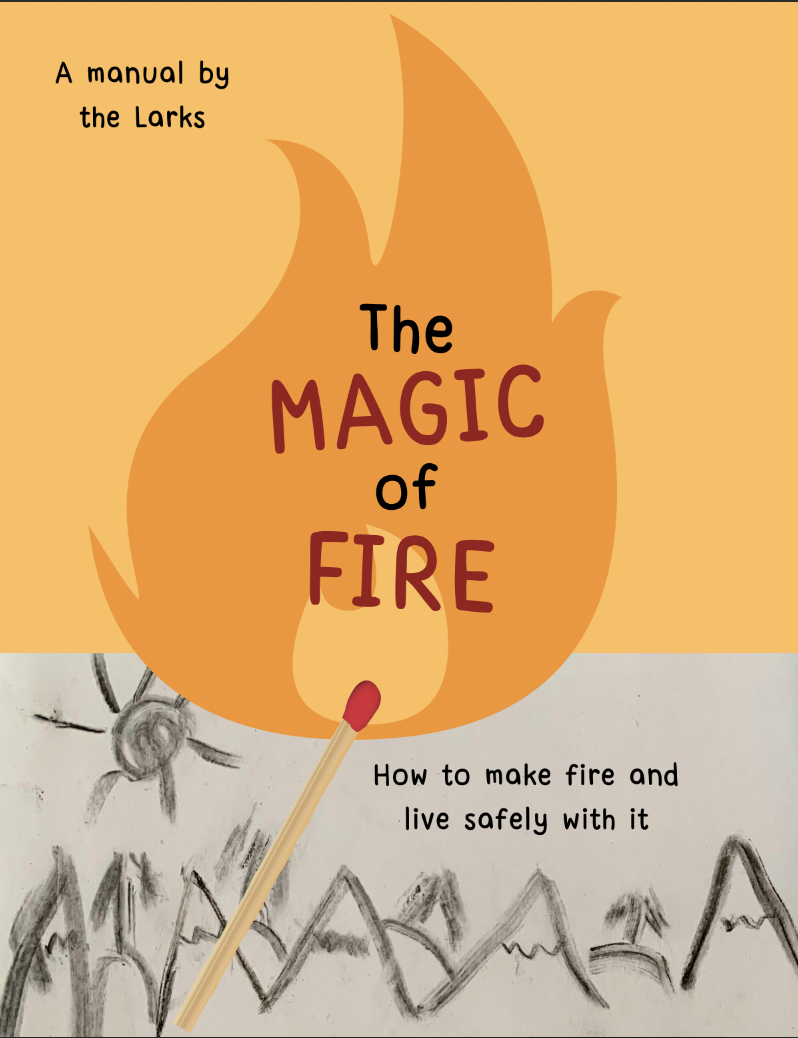
To prepare for the experience, students spent a month learning to build, start, and maintain small campfires with teacher support and consistent reflection on how things were going.
The experience:
1 - Start a fire
2 - Keep it going
3 - Roast a potato over a fire
Students were grouped in teams of four to build a fire. They gathered all their own tinder and kindling from the forest beforehand and used sleds to haul materials to the sites. They were required to really listen to each other, and teachers weren’t inside the ring. It was both fun and hard to see them during this challenge—there were tears and there were failures.
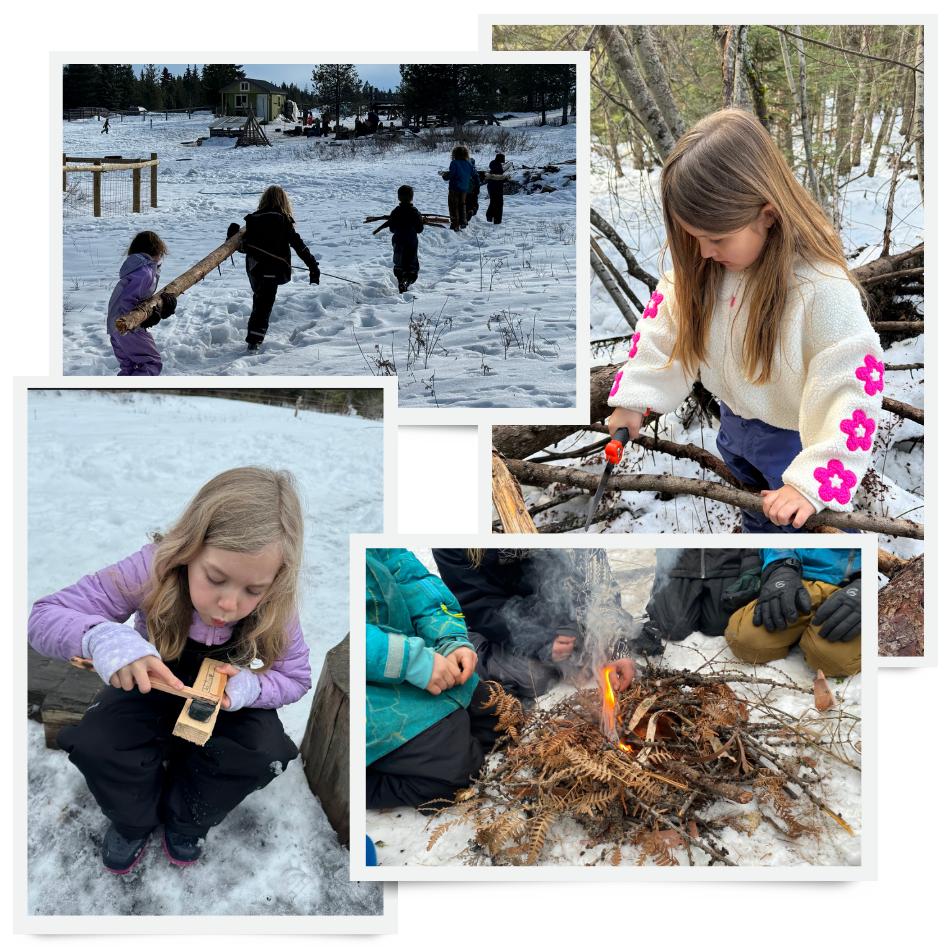
Karen- “It was also very funny, because we didn’t tell them how to cook their potatoes, and some teams roasted theirs on sticks! But by the end, all groups were able to create the fire and figured out how to roast their potato. Sometimes as educators, we step in too soon. Letting them be independent allowed us to see their individual and collective gifts, and acknowledge them. The project was about interacting with and building fire, but they could use the same problem-solving skills in their academic journey and as adults when they face challenges.”
The final product was a fire manual we shared with the Chamber of Commerce. Creating the manual was the highlight of their efforts, integrating PBL concepts like Kanban Boards and mind maps to understand manual structure. It was a collaborative process that allowed for a systems thinking approach for all of the parts created to ultimately make a whole. It also allowed them to reflect on their experiential learning while utilizing phonics and writing goals. Students handled different sections of the manual, but still worked together. For example, one student was in charge of the glossary and would interact with different teams to collect words and discuss feedback.
How did the project impact your students?
We've had several parents reach out after our fire project and say, “Our kids are now building the fire in the wood burning stove every day. They're the ones.” They have sleds, they go out, they gather the wood, they pull the sleds through the snow, they work together. If it's really heavy, they'll create chains of students to pass logs. They're not just building a fire we gathered all the wood and gave them all the supplies for—that’s the difference between the dessert versus the main course in PBL.
Yes, we taught them how to make a fire, but that wasn’t necessarily the goal. We kept asking, “Are they able to stay focused on the task? If they're in a team, can they support each other in doing it together? Will they be able to transfer the skills and knowledge acquired during this learning experience to other situations?" And the answer to all of these questions was YES, they can!
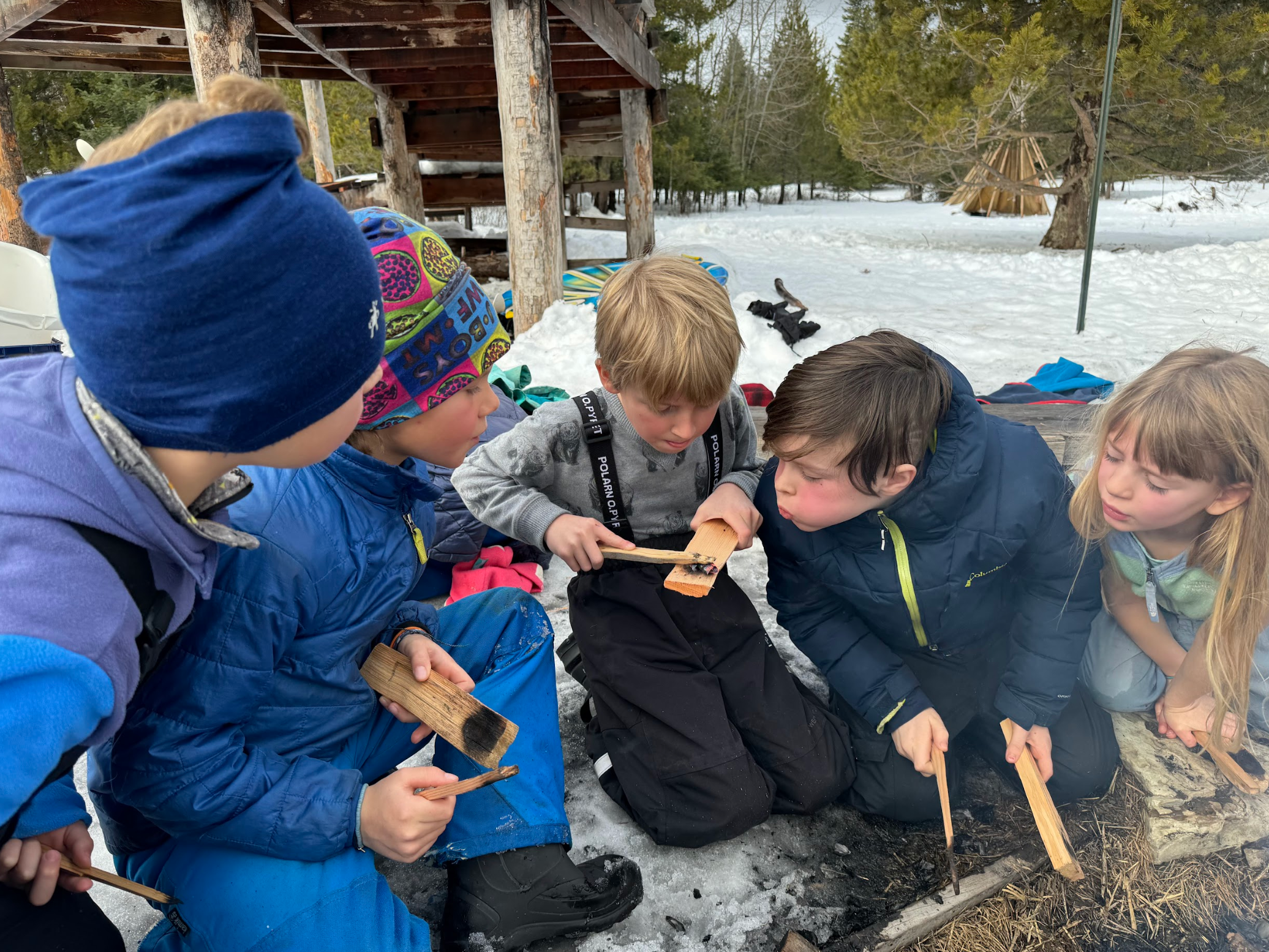
We love stories from the field. If PBL has reshaped the learning experience for your students, we want to hear all about it! Reach out to us at ✉️ [email protected]. Let's explore ways to share your PBL story and inspire other educators in their journey!
